Treasure finds 'important to Shropshire's story'
- Published
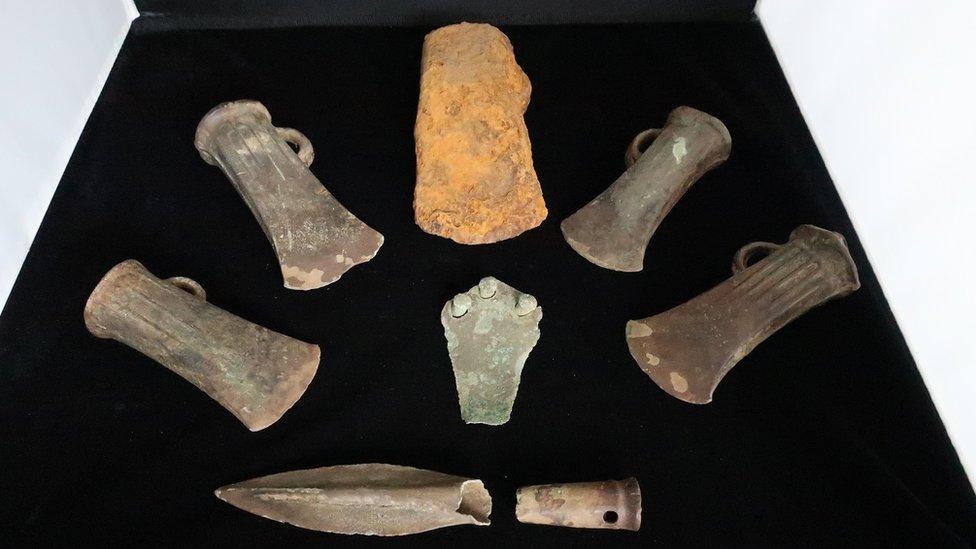
The mix of Iron and Bronze Age axe heads in one hoard is "groundbreaking", according to an expert
Tools, rings and weapons dating back more than 2,500 years have been declared as treasure.
An expert said one of the five hoards from Shropshire was "groundbreaking" as it included tools from both the Bronze and Iron Ages.
Peter Reavill said he thought it was the first time tools from both periods had been found together in Britain.
"All are prehistoric finds and really important to the story of Shropshire," he said.
Bronze Age specialist Mr Reavill, who is Shropshire's finds liaison officer, said the county's museums hope to acquire all the items.
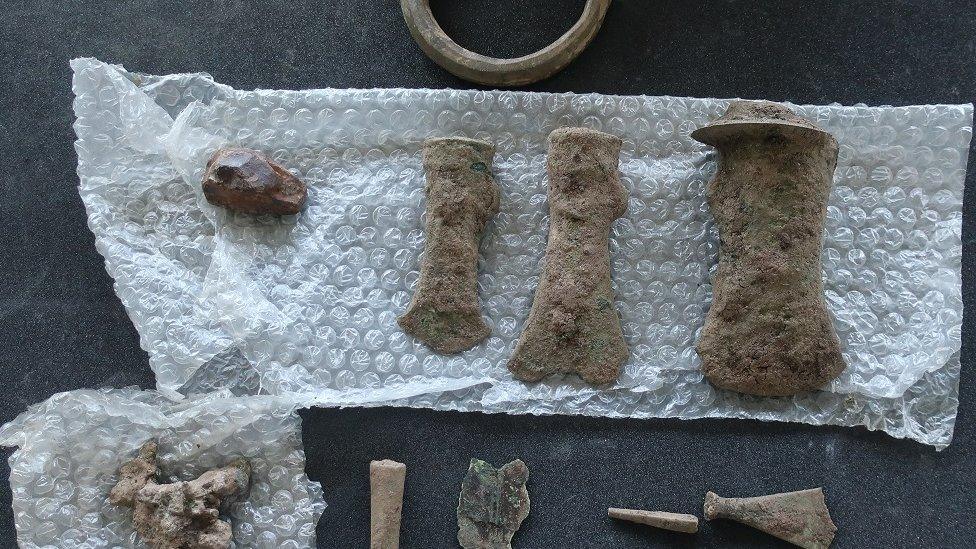
Another hoard consists of three Bronze Age axes, one which has been merged with two other tools, plus a cauldron ring and a personal razor
All the finds were made within a square mile of each other, in the same area as the Shropshire Bulla.
Mr Reavill believes they were placed deliberately on the edge of a wetland area as "offerings" to the weather.
He said their discovery in 2017 and 2018 was partly due to "climate change", as erosion brings them to the surface.
One hoard contains both bronze and iron axe heads, dating from 750BC to 650BC, which Mr Reavill described as "groundbreaking".
"With iron axes of this period, they are basically learning how to use the metal," he said.
There are only about 25 iron axes discovered in Britain, according to Mr Reavill.
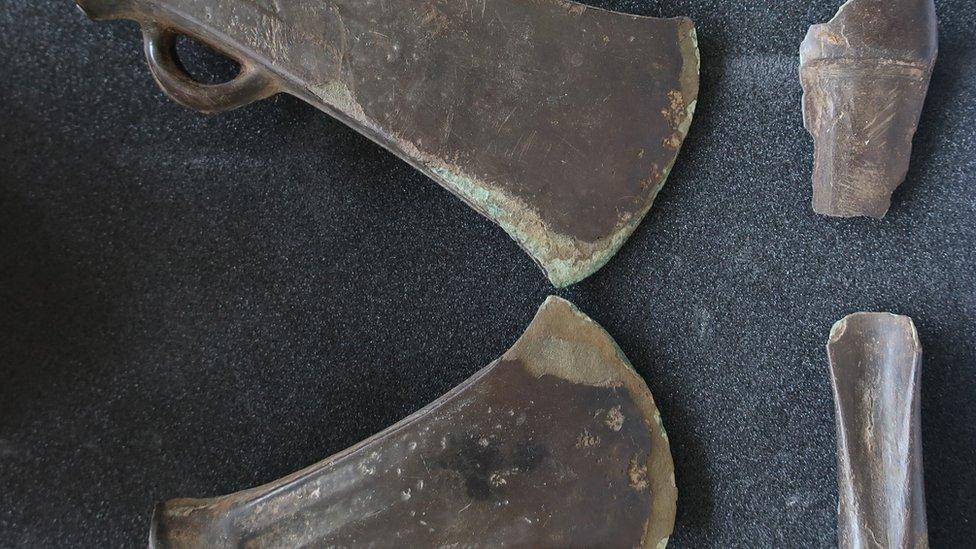
A more typical hoard was found among the five, consisting of two Bronze Age axe heads and tools
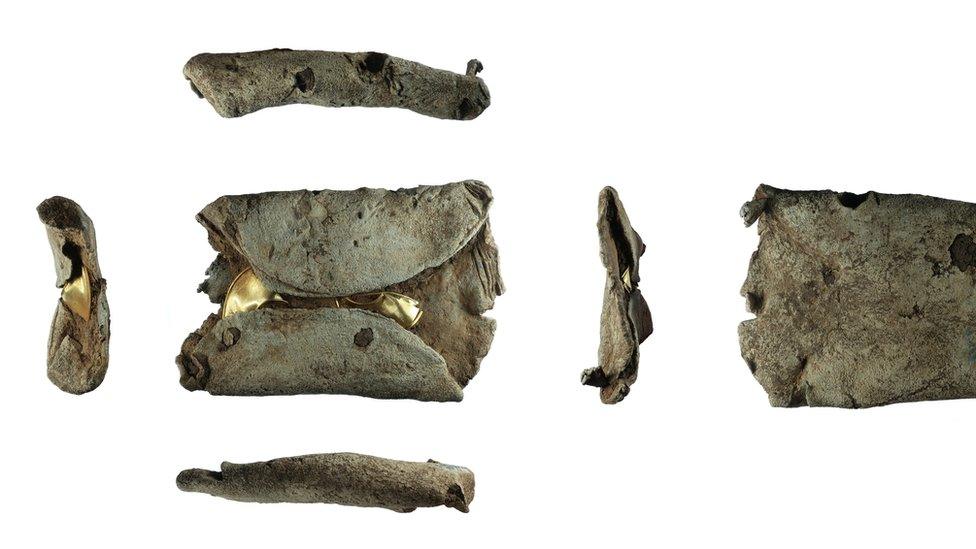
The lock rings were likely placed in the lead ingot
Another hoard, consists of two gold lock rings, likely to have been used as beads on a necklace or in hair, was placed inside a lead ingot - most likely to weigh down the gold offering.
But Mr Reavill said the lead was actually more important, as there are only about 10 objects of the metal from the Bronze Age in the country.
You may also be interested in:
At inquests held in Shrewsbury's Shirehall, all five hoards were declared as treasure by coroner John Ellery.
Mr Reavill said: "These are all to do with the people who lived in Shropshire so we are able build up a better understanding of everyday people's lives."
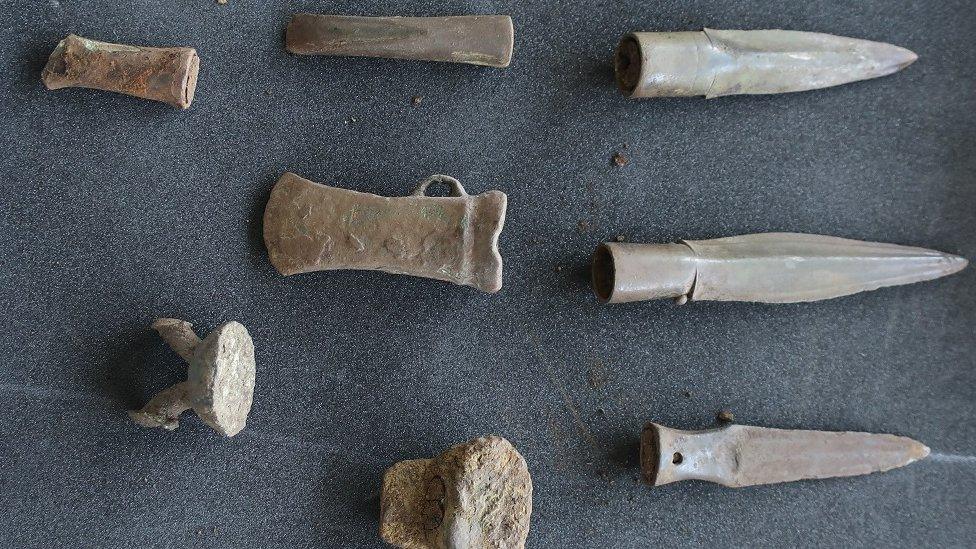
Another hoard includes spears, a gouge, a chisel, an axe and some metalworking waste

Follow BBC West Midlands on Facebook, external, on Twitter, external, and sign up for local news updates direct to your phone, external.
- Published4 September 2019
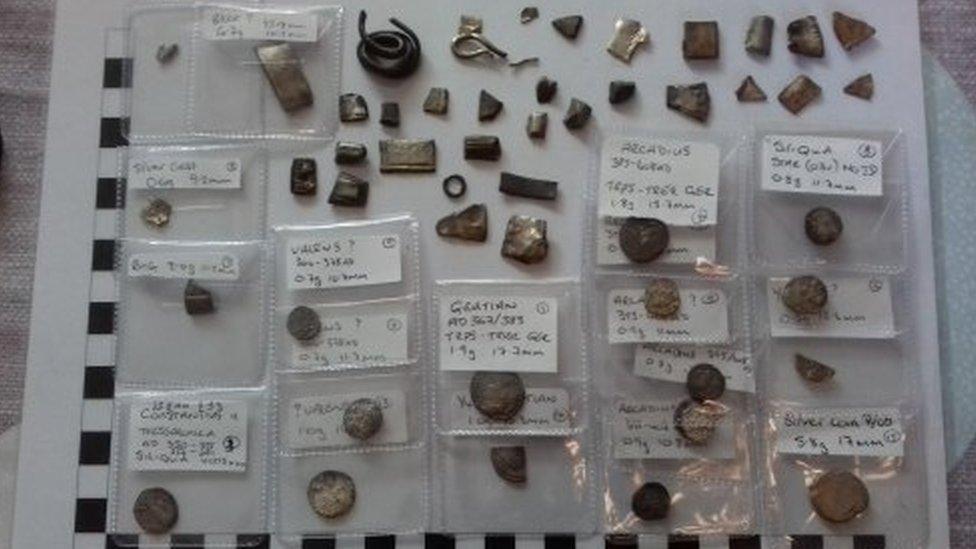
- Published7 August 2019
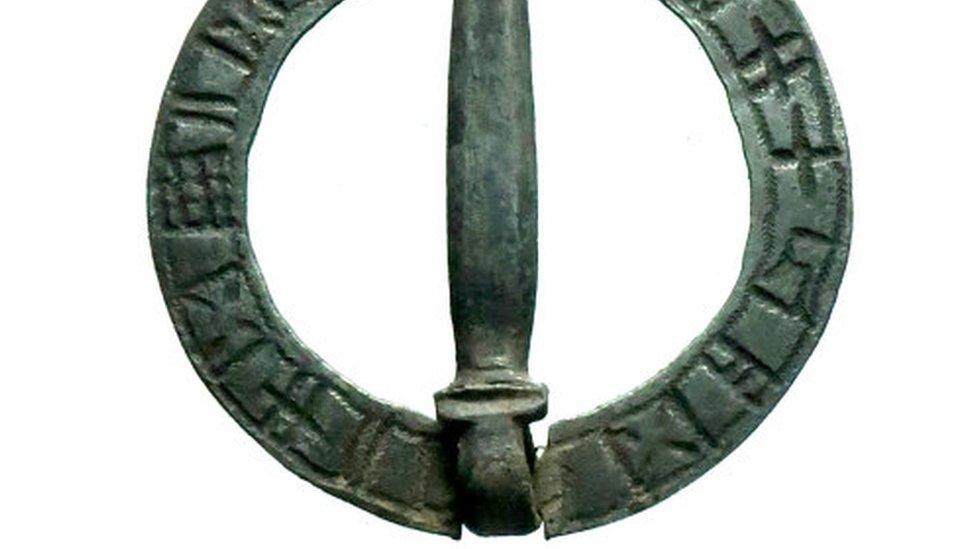
- Published16 April 2019

- Published20 April 2017
